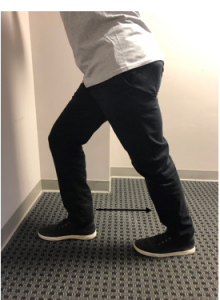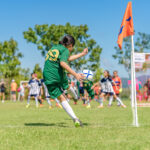
12 Sep Fix These Three Common Lower Leg Problems
You may not think about your shins much, unless you’ve just walked into a coffee table; however, there are some issues that affect the lower leg which can become irritating. Activities like running, walking, hiking, and others can stress and strain the lower leg – causing pain and discomfort. Below are some different issues that may affect your lower leg/shins and how to help deal with it.
Shin Splints: You may have heard this term used frequently, especially by runners and/or track team members. The problem with the term is that it’s often just a catch all, and you may actually be dealing with an issue unrelated to your shins. True shin splints are typically most often found on the interior of your shin bone, near your ankle – although you can have them on the outside of your leg as well, it’s much less common.
Don’t: Don’t obsessively poke your shins, looking for sore spots. As a very prominent bone with minimal padding, your shins are typically more sensitive in general than other areas. Don’t keep going at high levels with shin pain without addressing it.
Do: Take a few days off and see if your pain/discomfort lessens. Shin splints are often related to running, and an increase in distance and/or training intensity. You can also try ice for discomfort. If your pain persists, make an appointment with a physical therapist.
Anterior Leg Pain: The outer side of your leg (anterior) is made up of several muscles which function together to help you walk, run, and move. Depending on your activity, you can irritate some of these muscles and end up with anterior leg pain. Inclines and declines can each put stress on this part of your leg, and especially when combined with an increase in walking/running, result in leg pain. Another cause? New shoes: wearing new shoes to run/walk can irritate this area as well.
Don’t: Do not ignore the issue, as it could contribute to other irritation further “down the chain.” Also, don’t continue with your activity as usual – if hills, additional miles, new shoes, etc have caused muscle irritation, take steps to limit the irritation.
Do: Break shoes in slowly and keep your previous pair in rotation for awhile to limit transition problems. Back off hills or distance if either seems to be making anterior leg pain worse. You can also ice, rest, and stretch your anterior leg simply by sitting in a kneeling position with your legs under you. If discomfort persists, don’t hesitate to see a physical therapist who can look at potential additional biomechanical causes, and focus on treatment – including innovative methods like dry needling.
Calf Pain: Your calf is the large muscle on the back of your leg between your ankle and knee. Calf pain and strains are fairly common, often due to overuse and having tight calf muscles. Women who frequently wear high heels may also be at higher risk for calf pain.
Don’t: Don’t continue your activity with calf pain, as you could make a potentially mild problem worse. If you’re experiencing calf pain, don’t continue wearing high heels.
Do: Take time off from your usual activities. Wear low-heeled, supportive shoes. You can also ice your calf. For prevention, ensuring your calves aren’t tight is key. Try the stretch pictured below. For persistent calf problems, your best bet is seeing a physical therapist to help you get on top of it.
Having lower leg pain? Body One PT has the solution! Our team of talented, caring physical therapists works with clients of all ages and activity levels and we’d love to help you, too. We’re locally-owned and operated, with three locations serving Central Indiana: North Indianapolis, Fishers, and Zionsville. Don’t wait, call Body One today and let us help get you back on track.





